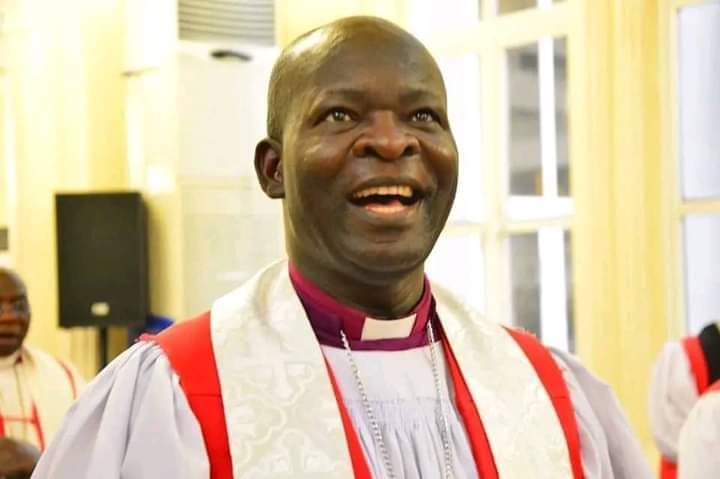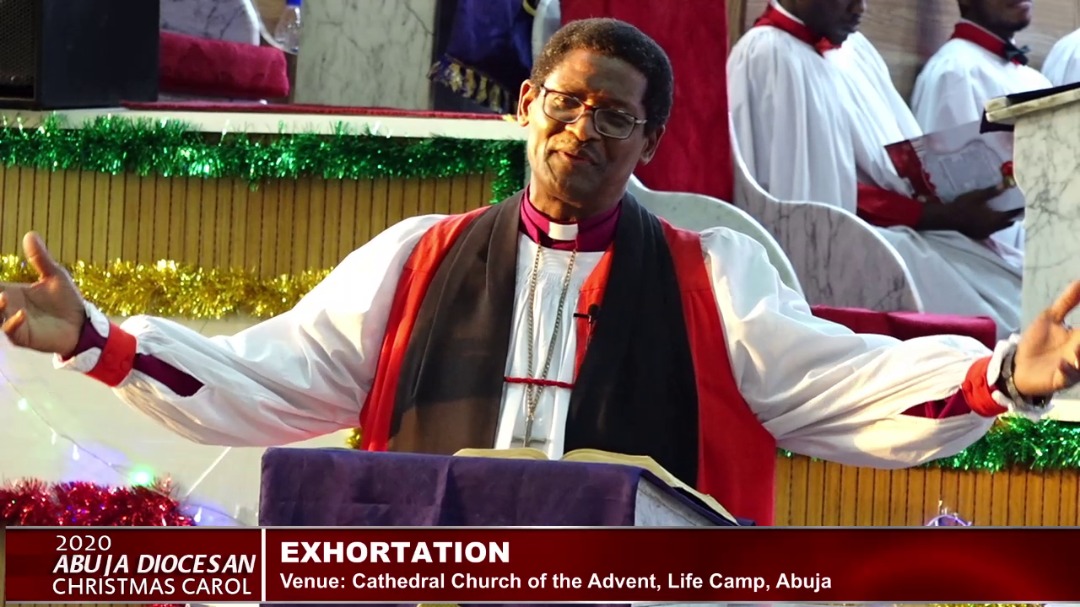Religious Syncretism in Nigeria
Article written by David Nwanekpe.
Published by ACOTHSB New York.July 2024.USA.
Religious syncretism refers to the blending or amalgamation of different religious traditions, beliefs, and practices into a new, cohesive system. This process can occur naturally as cultures and societies interact and influence each other, leading to the incorporation of diverse elements into a single religious framework. Here are some detailed insights into religious syncretism:
Historical Examples
- Hellenistic Period:
During the Hellenistic period (323–31 BCE), Greek culture and religion merged with those of
the Middle East and Egypt. An example is the god Serapis, who was a syncretic deity
combining aspects of the Greek gods Zeus and Hades with the Egyptian god Osiris.
- Christianity and Paganism:
Early Christianity often adapted and incorporated elements from pagan traditions. For instance, the celebration of Christmas on December 25th coincides with the Roman festival of Saturnalia and the birthday of the sun god Sol Invictus, which helped to ease the transition for converts from paganism to Christianity.
- Latin America:
In Latin America, the blending of indigenous religions with Christianity is evident. The Virgin of Guadalupe in Mexico represents a fusion of the Catholic Virgin Mary with the Aztec goddess Tonantzin, symbolizing the syncretism between indigenous beliefs and Catholicism brought by Spanish colonizers.
- Vodou in Haiti:
Haitian Vodou is a syncretic religion that combines elements of West African Vodun, Catholicism, and indigenous Taíno beliefs. Catholic saints are often associated with Vodou spirits (loa), creating a unique religious practice that incorporates elements from multiple traditions.
Characteristics of Religious Syncretism
- Adaptation: Religions adopt and modify practices, symbols, and beliefs from othertraditions, often to make them more relevant or acceptable to their adherents.
- Cultural Interaction: Syncretism typically occurs in multicultural societies where different religious communities interact and influence one another.
- Innovation: The blending of traditions can lead to new religious expressions and practices, enriching the spiritual landscape and providing novel ways for individuals to connect with the divine.
Modern Contexts
- New Age Movements:
New Age spirituality often combines elements from various religious and spiritual traditions, including Hinduism, Buddhism, Western esotericism, and indigenous practices. This syncretic approach reflects a quest for personal spiritual experience over adherence to a single religious tradition.
- Globalization:
In the contemporary world, globalization facilitates the exchange and mixing of religious ideas and practices across cultures. This has led to the rise of syncretic religious practices in diverse societies, as people blend elements from different traditions to create personalized spiritual experiences.
Controversies and Criticisms
- Authenticity: Critics argue that syncretism can dilute or distort the original beliefs and practices of a religion, leading to a loss of authenticity and purity.
- Identity: Syncretism can challenge the identity of religious traditions, creating tension within communities over what constitutes true or orthodox practice.
- Power Dynamics: The blending of religions can reflect unequal power dynamics, where dominant cultures impose their beliefs on less powerful ones, leading to a form of cultural or religious colonization.
Benefits of Religious Syncretism
- Inclusivity: Syncretism can promote inclusivity and tolerance by highlighting commonalities between different religious traditions and fostering mutual understanding.
- Cultural Richness: The blending of different religious practices and beliefs can lead to a richer and more diverse cultural heritage, offering a wider array of spiritual resources and expressions.
- Adaptability: Syncretic religions can be more adaptable and relevant to changing social and cultural contexts, helping religious traditions to remain vibrant and meaningful in contemporary society.
Religious syncretism illustrates the dynamic and evolving nature of religious belief and practice, demonstrating how religions can adapt, transform, and coexist in a diverse and interconnected world.
Religious Syncretism in Nigeria
Religious syncretism in Nigeria is a fascinating and complex phenomenon, reflecting the country’s rich cultural diversity and long history of religious interaction. Nigeria is home to a wide variety of religious traditions, including Islam, Christianity, and numerous indigenous religions. The interaction and blending of these beliefs have led to unique religious practices and expressions.
Historical Context
Indigenous Religions:
Before the introduction of Islam and Christianity, Nigeria had a rich tapestry of indigenous religions. These belief systems were deeply rooted in the local cultures and involved worship of various deities, ancestors, and nature spirits. Each ethnic group had its own distinct religious practices, such as the Yoruba’s worship of Orisha, the Igbo’s reverence for Ala (the earth goddess), and the Hausa’s animistic traditions.
Islam:
Islam arrived in Nigeria in the 11th century through trade and the influence of the Mali and Songhai Empires. It became particularly entrenched in the northern regions, where the
Hausa-Fulani people embraced it. Over time, Islamic practices blended with local customs, resulting in a unique form of Islam that includes elements of traditional African religions.
Christianity:
Christianity was introduced by European missionaries in the 19th century, mainly in the southern and central parts of Nigeria. The religion rapidly grew, leading to the establishment of various Christian denominations. Similar to Islam, Christianity in Nigeria often incorporated local beliefs and practices, creating distinct syncretic forms.
Examples of Religious Syncretism in Nigeria
- Aladura Churches:
Aladura (meaning “praying people” in Yoruba) churches are a prominent example of Christian syncretism in Nigeria. These churches combine elements of Christianity with indigenous African beliefs and practices. For instance, they emphasize faith healing, prophecy, and the use of sacred objects like holy water and anointing oil. The Cherubim and Seraphim Church and the Celestial Church of Christ are notable examples of Aladura churches.
- Bori and Islam:
In northern Nigeria, the Bori cult, a traditional religion involving spirit possession and healing rituals, has syncretized with Islam. Many Muslims in this region participate in Bori practices, blending Islamic prayers and rituals with traditional spirit worship. This syncretism is particularly evident during festivals and healing ceremonies.
- Ogboni Society:
The Ogboni Society is a traditional Yoruba secret society that plays a significant role in the social and religious life of the Yoruba people. Although primarily associated with indigenous religion, many Ogboni members also identify as Christians or Muslims. This dual affiliation allows them to participate in both traditional and modern religious practices. Factors Promoting Syncretism
Cultural Integration:
Nigeria’s ethnic diversity and history of cultural interactions have created an environment conducive to religious syncretism. Ethnic groups often borrow religious practices from one another, leading to a blending of beliefs.
Colonial Influence:
The colonial period introduced new religious dynamics, with Christianity spreading rapidly and interacting with indigenous beliefs. Missionaries often adapted their messages to align with local customs, facilitating syncretism.
Social Functions:
Syncretic practices often serve important social functions, such as healing, conflict resolution, and community cohesion. These practices provide spiritual and practical benefits that resonate with local populations.
Challenges and Controversies
Authenticity:
Critics argue that syncretism can dilute the purity of religious traditions, leading to
practices that are neither fully Christian, Muslim, nor indigenous.
Identity:
Religious syncretism can create tensions regarding religious identity. Adherents may face challenges in reconciling their syncretic practices with the orthodox teachings of their faith.
Power Dynamics:
Syncretism often reflects power dynamics, with dominant religions imposing their beliefs on indigenous practices. This can lead to the marginalization of traditional religions.
- **Cultural and Religious Festivals**
Nigeria is known for its vibrant cultural and religious festivals, many of which demonstrate
syncretism.
**Osun-Osogbo Festival**:
This annual festival in Osogbo, Osun State, is dedicated to the river goddess Osun, a significant deity in Yoruba religion. Despite its roots in traditional religion, the festival often sees participation from Christians and Muslims, who come to honor the goddess and seek her blessings.
**Eyo Festival**:
Held in Lagos, this festival has roots in Yoruba tradition but also incorporates elements of Christian and Muslim practices. Participants wear white robes and hats, and the event is seen as a blend of traditional and modern religious elements.
- **Interfaith Dialogue and Cooperation**
Nigeria’s diverse religious landscape has led to various efforts to promote interfaith dialogue and cooperation, often highlighting syncretism in practice.
**Nigeria Inter-Religious Council (NIREC)**:
This council brings together Christian and Muslim leaders to foster understanding and peaceful coexistence. NIREC’s efforts often showcase how syncretism can lead to harmonious relationships between different religious groups.
**Peaceful Coexistence Programs**:
Various NGOs and community groups run programs to promote peaceful coexistence, using syncretic practices as a foundation for mutual respect and understanding among different religious communities.
- **Contests and Competitions**
In a more literal sense, Nigeria hosts various contests that may touch on cultural and
religious themes.
**National Quranic Recitation Competition**:
This annual event draws participants from across the country, showcasing the integration of Islamic education and Nigerian cultural practices. The competition highlights how Islamic traditions have blended with local cultures.
**Christian Music Competitions**:
Various competitions focus on gospel music, reflecting the fusion of Christian themes with Nigerian musical styles. These events often highlight the syncretic nature of Nigerian Christianity, blending traditional African rhythms with gospel music.
- **Academic and Scholarly Contests**
Scholarly contests and conferences often explore themes of religious syncretism in
Nigeria.
**Conferences on African Traditional Religions**:
Universities and research institutions frequently hold conferences that explore the syncretism between African traditional religions and modern faiths. These events provide a platform for scholars to discuss the ongoing blending of religious practices.
**Essay Competitions**:
Academic institutions sometimes organize essay competitions on topics such as religious syncretism, encouraging students to explore and analyze the ways in which different religious traditions interact and merge in Nigeria.
- **Political and Social Contexts**
Religious syncretism can also be seen in political and social contexts within Nigeria.
**Religious Harmony Initiatives**:
Government and civil society initiatives often promote religious harmony by encouraging syncretic practices that blend elements of Christianity, Islam, and traditional religions. These initiatives aim to reduce religious tension and foster national unity.
**Grassroots Movements**:
At the grassroots level, many communities practice a form of syncretism that blends religious traditions in daily life. These practices can be seen in communal celebrations, marriages, and local governance, reflecting a pragmatic approach to religious coexistence.
Syncretism involving Catholicism in Nigeria Religious syncretism involving the Roman Catholic Church in Nigeria is a complex and fascinating topic. This phenomenon occurs as Catholicism interacts with indigenous Nigerian religious practices and beliefs, resulting in unique and blended forms of worship and religious expression. Here are some key points and examples to consider:
Historical Context
Introduction of Catholicism:
Catholicism was introduced to Nigeria by Portuguese missionaries in the 15th century, and later significantly expanded through the efforts of French, Irish, and other European missionaries in the 19th and early 20th centuries. These missionaries established schools, hospitals, and churches, making significant inroads into Nigerian society.
Interaction with Indigenous Religions:
As Catholicism spread, it inevitably came into contact with Nigeria’s rich tapestry of indigenous religions. These religions were characterized by belief in various deities, ancestor worship, and rituals that connected the spiritual and material worlds.
Examples of Syncretism
- **Aladura Churches**:
While not exclusively Catholic, the Aladura movement (meaning “praying people” in Yoruba) emerged as a syncretic Christian movement that incorporated traditional African religious practices with Christian elements. These churches emphasize prayer, prophecy, healing, and the use of spiritual objects like holy water and anointing oil. Some Aladura churches maintain ties with Roman Catholicism or were influenced by Catholic practices.
- **Marian Devotion**:
In Nigeria, the veneration of the Virgin Mary often incorporates elements of traditional reverence for mother goddesses. For example, the widespread devotion to Our Lady of Fatima and the Virgin of Guadalupe resonates with indigenous beliefs in powerful maternal figures. Marian processions and festivals may also include traditional music, dance, and attire.
- **The Annual Ahiara Pilgrimage**:
The Ahiara Pilgrimage in Imo State is a significant event that combines Catholic devotion with Igbo traditional practices. Pilgrims participate in Mass and other Catholic rites, but the event also features traditional dances, music, and rituals that reflect local customs and beliefs.
- **Holy Water and Sacramentals**:
The use of holy water, rosaries, and other sacramentals in Nigerian Catholicism often parallels the use of similar objects in traditional religious practices. Holy water might be used in ways reminiscent of traditional purification rituals, and sacramentals might be treated with a reverence similar to that afforded to indigenous spiritual objects.
Factors Promoting Syncretism
Cultural Integration:
The integration of Catholicism with local traditions has often been a pragmatic approach to make the religion more acceptable and understandable to indigenous populations. Missionaries sometimes adopted a policy of accommodating certain local customs that did not directly contradict Catholic doctrine.
Colonial Influence:
During the colonial period, the interaction between European missionaries and local populations often led to a blending of religious practices. Missionaries adapted their messages to align with local customs to facilitate conversion and acceptance.
Social Functions:
Syncretic practices often serve important social functions, providing spiritual, psychological, and communal benefits. They help bridge the gap between traditional beliefs and new religious ideas, making them more relevant to local communities.
Challenges and Controversies
Authenticity:
Critics argue that syncretism can dilute the purity of Catholic doctrine, leading to practices that are not truly Catholic or that mix incompatible beliefs.
Identity:
Religious syncretism can create tension within the Catholic community over what constitutes true Catholic practice. Some traditionalists may resist syncretic practices, while others embrace them as a natural evolution of their faith.
Power Dynamics:
Syncretism often reflects historical power dynamics, where the dominant religion (Catholicism, in this case) absorbs elements of the indigenous religion, which can lead to the marginalization of purely traditional practices.
Benefits of Syncretism
Inclusivity:
Syncretism can promote inclusivity and tolerance by highlighting commonalities between different religious traditions and fostering mutual understanding and respect.
Cultural Richness:
The blending of Catholic and traditional practices enriches the cultural heritage of Nigerian communities, offering diverse spiritual expressions and resources.
Adaptability:
Syncretic practices can make Catholicism more adaptable and relevant to contemporary Nigerian society, helping it to remain vibrant and meaningful. Religious Syncretism and the Anglican Church in Nigeria Religious syncretism involving the Anglican Church in Nigeria is an interesting topic that illustrates how Christianity has interacted with and adapted to local cultural and religious traditions. The Anglican Church, as a significant Christian denomination in Nigeria, has experienced various forms of syncretism since its establishment. Here are some key points and examples:
Historical Context
Introduction of Anglicanism in Nigeria and Syncretism: Anglicanism was introduced to Nigeria in the 19th century by British missionaries under the Church Missionary Society (CMS). The first mission station was established in Badagry in 1842, and from there, Anglicanism spread to other parts of Nigeria.
Interaction with Indigenous Religions:
As Anglican missionaries spread the gospel, they encountered a diverse array of indigenous religious practices. In many cases, the missionaries sought to accommodate certain cultural practices that did not directly conflict with Christian teachings, leading to a blending of Anglican and traditional elements.
Examples of Syncretism
- **Cultural Integration in Worship**:
- Anglican services in Nigeria often incorporate elements of traditional African
culture. This includes the use of indigenous languages, music, and dance in
worship. Hymns and liturgical songs are sometimes sung in local languages and set
to traditional African rhythms.
- **Yoruba Orisa and Anglican Saints**:
Among the Yoruba people, there is a tradition of revering Orisa, or deities, which has
sometimes been syncretized with the veneration of Christian saints. While the Anglican
Church does not officially endorse this practice, it is not uncommon for local beliefs to be
blended in the lives of individual believers.
- **Annual Harvest Festivals**:
Harvest festivals in Nigerian Anglican churches often combine Christian thanksgiving with
traditional celebrations of the agricultural cycle. These festivals may include traditional
dances, songs, and attire, reflecting a blend of Christian gratitude and indigenous cultural
expressions.
- **Naming Ceremonies**:
In some Anglican communities, traditional naming ceremonies for newborns are
incorporated into Christian baptism services. These ceremonies often include elements
such as ancestral blessings and traditional prayers, alongside Christian rites.
- **Healing and Spiritual Practices**:
Some Anglican churches in Nigeria have integrated traditional healing practices into their
ministry. Prayer and anointing for healing are often accompanied by practices that have
roots in indigenous religion, such as the use of certain herbs or rituals for protection.
Factors Promoting Syncretism
Cultural Integration:
The willingness of Anglican missionaries and local leaders to incorporate elements of
traditional culture into church life has facilitated syncretism. This approach has made
Anglicanism more accessible and relevant to Nigerian communities.
Social Functions:
Syncretic practices often serve important social functions, helping to maintain community
cohesion and continuity with the past. They provide a framework for individuals to navigate
their dual identities as Christians and members of traditional cultures.
Adaptation to Local Contexts:
The Anglican Church’s adaptation to local contexts, including the use of indigenous
languages and cultural expressions in worship, has helped foster syncretism. This
approach respects and preserves local traditions while integrating them into the Christian
faith.
Challenges and Controversies
Authenticity:
Critics argue that syncretism can lead to a dilution of orthodox Christian beliefs and
practices. They worry that the incorporation of traditional elements might undermine the
purity of Anglican doctrine.
Identity:
Syncretism can create tension within the Anglican community regarding religious identity.
Some members may feel conflicted between adhering to traditional practices and
maintaining a strict Christian identity.
Power Dynamics:
Syncretism often reflects historical and cultural power dynamics. The dominant religious group (in this case, Christianity) may absorb elements of indigenous religions, which can sometimes marginalize traditional practices.
Benefits of Syncretism
Inclusivity:
Syncretism promotes inclusivity and tolerance by highlighting commonalities between different religious traditions. It fosters mutual respect and understanding among diverse communities.
Cultural Richness: The blending of Anglican and traditional practices enriches the cultural and spiritual life ofNigerian communities. It offers a diverse array of religious expressions and resources. Adaptability: Syncretic practices make Anglicanism more adaptable and relevant to contemporary Nigerian society. They help the church remain vibrant and meaningful in a rapidly changing world.
Conclusion
Religious syncretism involving the Anglican Church in Nigeria exemplifies the dynamicnature of religious belief and practice. It shows how Christianity can adapt and integrate with local traditions, creating a unique religious landscape that reflects Nigeria’s rich cultural diversity. This blending of traditions highlights both the challenges and opportunities that come with religious syncretism, demonstrating the resilience andcreativity of faith in a complex and changing world.Religious syncretism in Nigeria is a multifaceted phenomenon that permeates various aspects of Nigerian society, from festivals and interfaith dialogue to academic and political spheres. Whether through cultural celebrations, interfaith initiatives, or academic discussions, the blending of religious traditions in Nigeria reflects the country’s rich diversity and the adaptability of its people in navigating their complex religious landscape.Religious syncretism in Nigeria is a testament to the country’s rich cultural heritage and the adaptability of its people. It highlights the dynamic nature of religious belief and practice,demonstrating how religions can evolve and integrate in response to changing social andcultural contexts. While syncretism presents challenges, it also enriches Nigeria’s spiritual landscape, offering diverse paths to understanding and experiencing the divine. Religious syncretism involving the Roman Catholic Church in Nigeria exemplifies the dynamic nature of religious belief and practice. It illustrates how Catholicism can adaptand integrate with local traditions, creating a unique religious landscape that reflects Nigeria’s rich cultural diversity. This blending of traditions highlights both the challenges and the opportunities that come with religious syncretism, demonstrating the resilience and creativity of faith in a complex and changing world.
References
Books and Academic Papers
- **Books**:
– *Christianity and Social Change in Africa: Essays in Honor of J.D.Y. Peel* edited by Toyin
Falola.
– *African Traditional Religion in the Modern World* by Jacob K. Olupona.
– *The Aladura Movement: A Sociological and Theological Study of the Healing Churches
in Nigeria* by J.D.Y. Peel.
- **Academic Papers**:
– *Syncretism in Africa* by Robin Horton.
– *The Dynamics of Religious Syncretism in Nigeria* by David Oluwasegun Akinade.
Journals and Articles
– **Journal of Religion in Africa**: This journal often features articles on religious
syncretism and the interaction between Christianity and indigenous religions in Africa.
– **Religion**: Publishes articles on various aspects of religious studies, including
syncretism and religious interactions.
– **Religious Studies Review**: Offers reviews and discussions of books and articles
related to religious syncretism.
#### Online Resources
- **Encyclopaedia Britannica**: [Religious
Syncretism](https://www.britannica.com/topic/syncretism)
- **Oxford Bibliographies**: [Syncretism in Religious
Studies](https://www.oxfordbibliographies.com/)
- **Google Scholar**: Search for “religious syncretism in Nigeria” for numerous academic
papers and articles.
- **Books and Articles:**
– *African Traditional Religion in the Modern World* by Jacob K. Olupona.
– *The Aladura Movement: A Sociological and Theological Study of the Healing Churches
in Nigeria* by J.D.Y. Peel.
– *Christianity and Social Change in Africa: Essays in Honor of J.D.Y. Peel* edited by Toyin
Falola.
- **Academic Journals:**
– Articles in the *Journal of Religion in Africa* and *African Affairs* often cover topics
related to religious syncretism and the interaction between Catholicism and indigenous
religions.
- **Online Resources:**
– **Encyclopaedia Britannica**: [Religious
Syncretism](https://www.britannica.com/topic/syncretism)
– **Google Scholar**: Search for “religious syncretism in Nigeria” for numerous academic
papers and articles.
- Books:
- Religion in Africa: Experience & Expression by Thomas D. Blakely, Walter E. A.
van Beek, and Dennis L. Thomson. This book provides comprehensive coverage of various
religious expressions in Africa, including syncretism.
- African Traditional Religion in the Modern World by Jacob K. Olupona. This
book explores how traditional African religions interact with modern faiths, including
Christianity and Islam.
- Christianity and Social Change in Africa: Essays in Honor of J.D.Y. Peel edited
by Toyin Falola. This collection of essays discusses the intersection of Christianity with
African cultures and religions.
- African Religions: A Very Short Introduction by Jacob K. Olupona. This book
offers an accessible overview of African religions and their syncretic aspects.
- Academic Papers:
- Syncretism in Africa by Robin Horton. This paper discusses various forms of
syncretism in African religious practices, including examples from Nigeria.
- The Dynamics of Religious Syncretism in Nigeria by David Oluwasegun
Akinade. This article examines how different religious traditions blend and interact in
Nigeria.
- Syncretism and Religious Innovation in Africa by Elizabeth Isichei. Published
in Journal of African History, this paper explores the historical and contemporary examples
of religious syncretism in Africa.
Journals and Articles
- Journal of the American Academy of Religion: This journal often features
articles on religious syncretism and interfaith dialogue, providing scholarly perspectives
and case studies.
- Religion: This journal publishes articles on various aspects of religious
studies, including syncretism and religious interactions.
- Religious Studies Review: Offers reviews and discussions of books and
articles related to religious syncretism.
Online Resources
- Encyclopaedia Britannica: Provides detailed articles on religious syncretism
and specific examples from around the world, including Nigeria.
- Religious Syncretism
- Oxford Bibliographies: Offers comprehensive bibliographies on religious
studies topics, including syncretism.
- Syncretism in Religious Studies
- Google Scholar: A valuable tool for finding academic papers and articles on
religious syncretism. Searching for terms like “religious syncretism in Nigeria” will yield
numerous scholarly resources.
Case Studies and Specific Examples
- Haitian Vodou and Yoruba Practices: For understanding syncretism in Yoruba
practices, looking at related syncretic religions like Haitian Vodou can provide insights.
Karen McCarthy Brown’s Mama Lola: A Vodou Priestess in Brooklyn is a good example.
- Festivals: Information on specific festivals like the Osun-Osogbo and Eyo
Festivals can be found in cultural studies and ethnographic research papers.
- Interfaith Dialogue Initiatives: Reports and publications by organizations
such as the Nigeria Inter-Religious Council (NIREC) and various NGOs working on interfaith
harmony in Nigeria.
Websites and Reports
- Nigeria Inter-Religious Council (NIREC): Official reports and publications on
interfaith dialogue and initiatives in Nigeria.
- UNESCO: Reports on cultural heritage and religious practices in Nigeria,
which often include discussions on syncretism.
- UNESCO World Heritage Sites – Osun-Osogbo Sacred Grove









